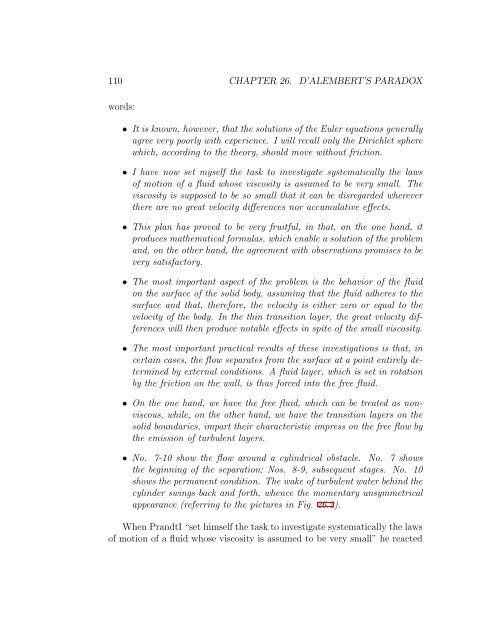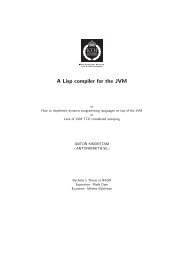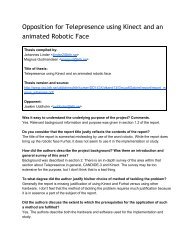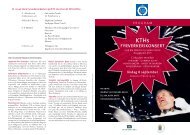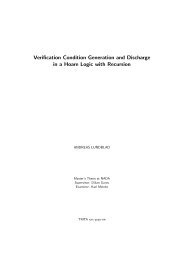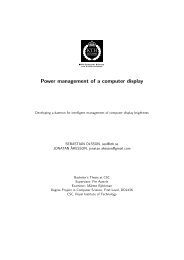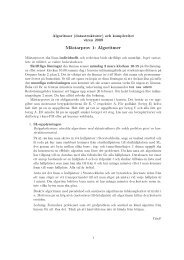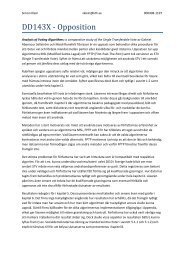Dr Faustus of Modern Physics - Department of Speech, Music and ...
Dr Faustus of Modern Physics - Department of Speech, Music and ...
Dr Faustus of Modern Physics - Department of Speech, Music and ...
Create successful ePaper yourself
Turn your PDF publications into a flip-book with our unique Google optimized e-Paper software.
110 CHAPTER 26. D’ALEMBERT’S PARADOX<br />
words:<br />
• It is known, however, that the solutions <strong>of</strong> the Euler equations generally<br />
agree very poorly with experience. I will recall only the Dirichlet sphere<br />
which, according to the theory, should move without friction.<br />
• I have now set myself the task to investigate systematically the laws<br />
<strong>of</strong> motion <strong>of</strong> a fluid whose viscosity is assumed to be very small. The<br />
viscosity is supposed to be so small that it can be disregarded wherever<br />
there are no great velocity differences nor accumulative effects.<br />
• This plan has proved to be very fruitful, in that, on the one h<strong>and</strong>, it<br />
produces mathematical formulas, which enable a solution <strong>of</strong> the problem<br />
<strong>and</strong>, on the other h<strong>and</strong>, the agreement with observations promises to be<br />
very satisfactory.<br />
• The most important aspect <strong>of</strong> the problem is the behavior <strong>of</strong> the fluid<br />
on the surface <strong>of</strong> the solid body, assuming that the fluid adheres to the<br />
surface <strong>and</strong> that, therefore, the velocity is either zero or equal to the<br />
velocity <strong>of</strong> the body. In the thin transition layer, the great velocity differences<br />
will then produce notable effects in spite <strong>of</strong> the small viscosity.<br />
• The most important practical results <strong>of</strong> these investigations is that, in<br />
certain cases, the flow separates from the surface at a point entirely determined<br />
by external conditions. A fluid layer, which is set in rotation<br />
by the friction on the wall, is thus forced into the free fluid.<br />
• On the one h<strong>and</strong>, we have the free fluid, which can be treated as nonviscous,<br />
while, on the other h<strong>and</strong>, we have the transition layers on the<br />
solid boundaries, impart their characteristic impress on the free flow by<br />
the emission <strong>of</strong> turbulent layers.<br />
• No. 7-10 show the flow around a cylindrical obstacle. No. 7 shows<br />
the beginning <strong>of</strong> the separation; Nos. 8-9, subsequent stages. No. 10<br />
shows the permanent condition. The wake <strong>of</strong> turbulent water behind the<br />
cylinder swings back <strong>and</strong> forth, whence the momentary unsymmetrical<br />
appearance (referring to the pictures in Fig. 26.2).<br />
When Pr<strong>and</strong>tI “set himself the task to investigate systematically the laws<br />
<strong>of</strong> motion <strong>of</strong> a fluid whose viscosity is assumed to be very small” he reacted


